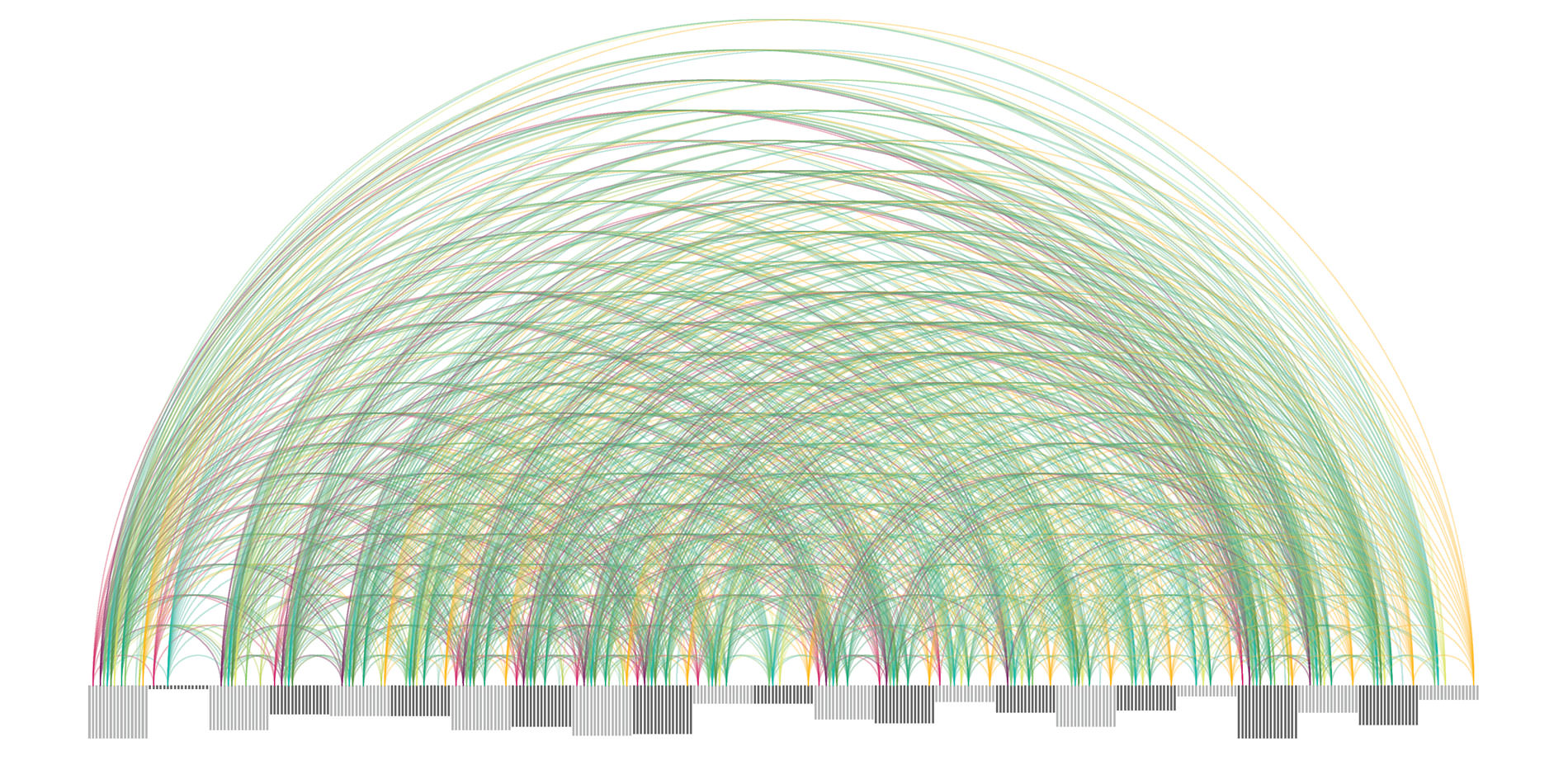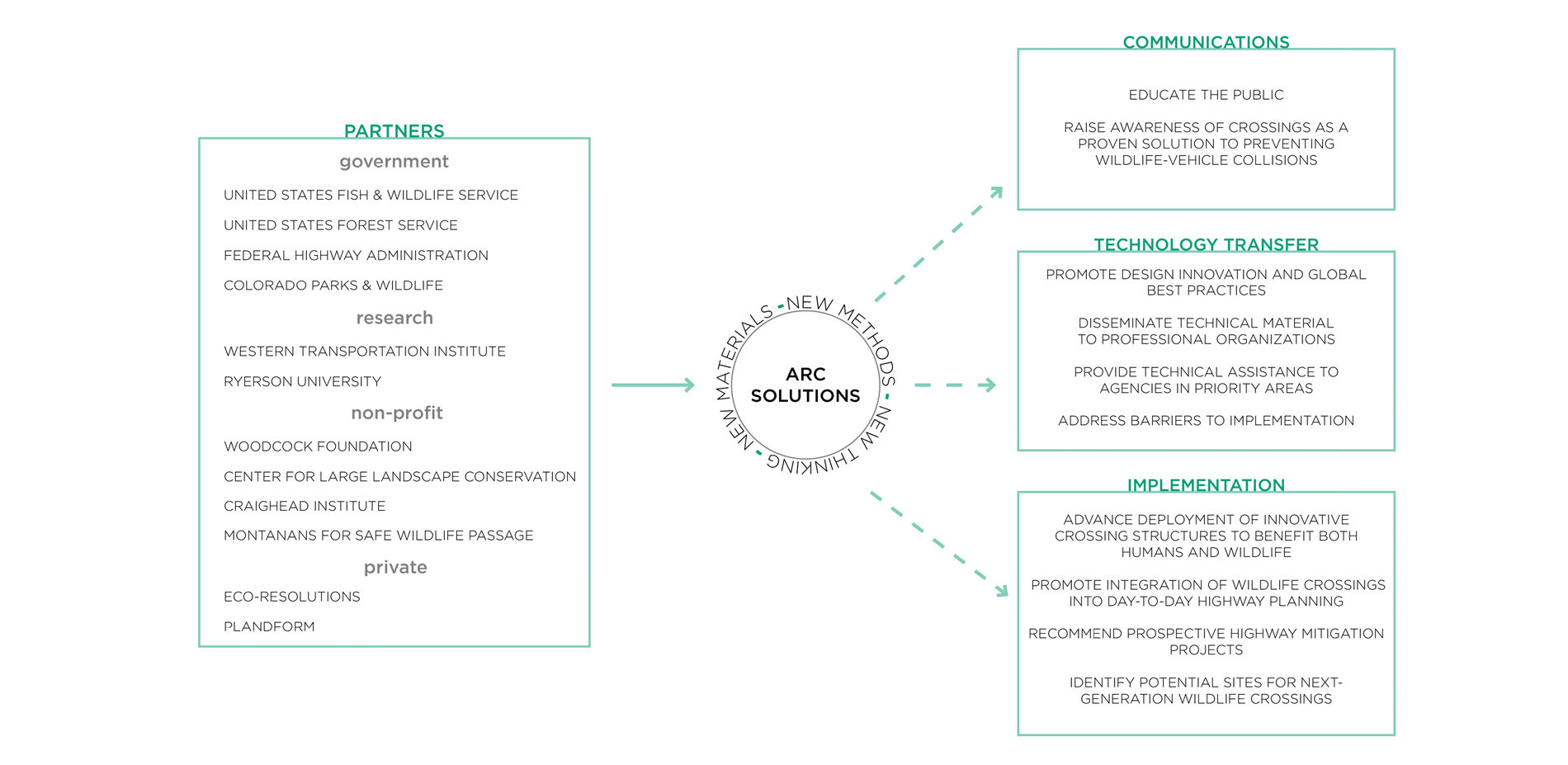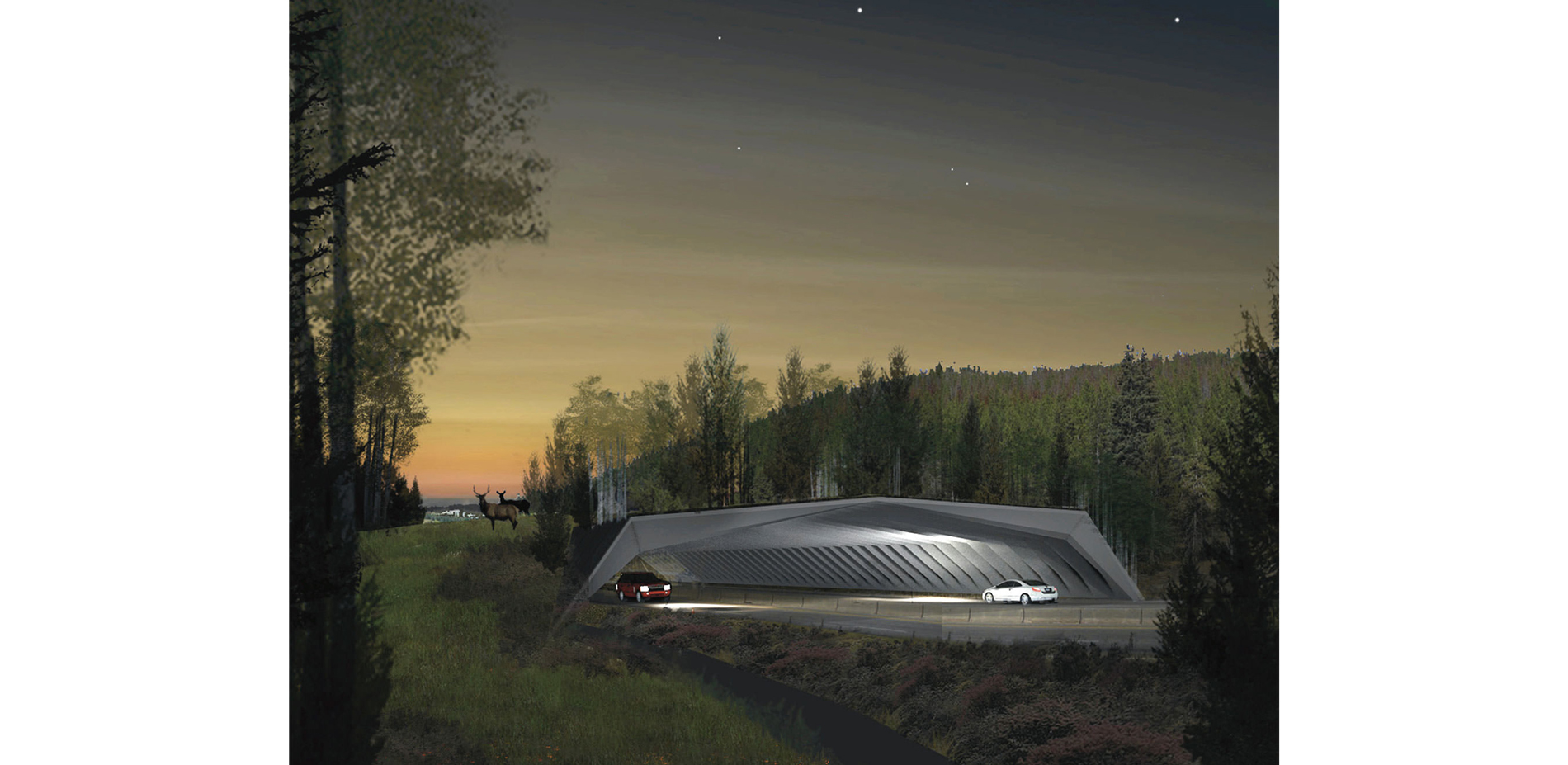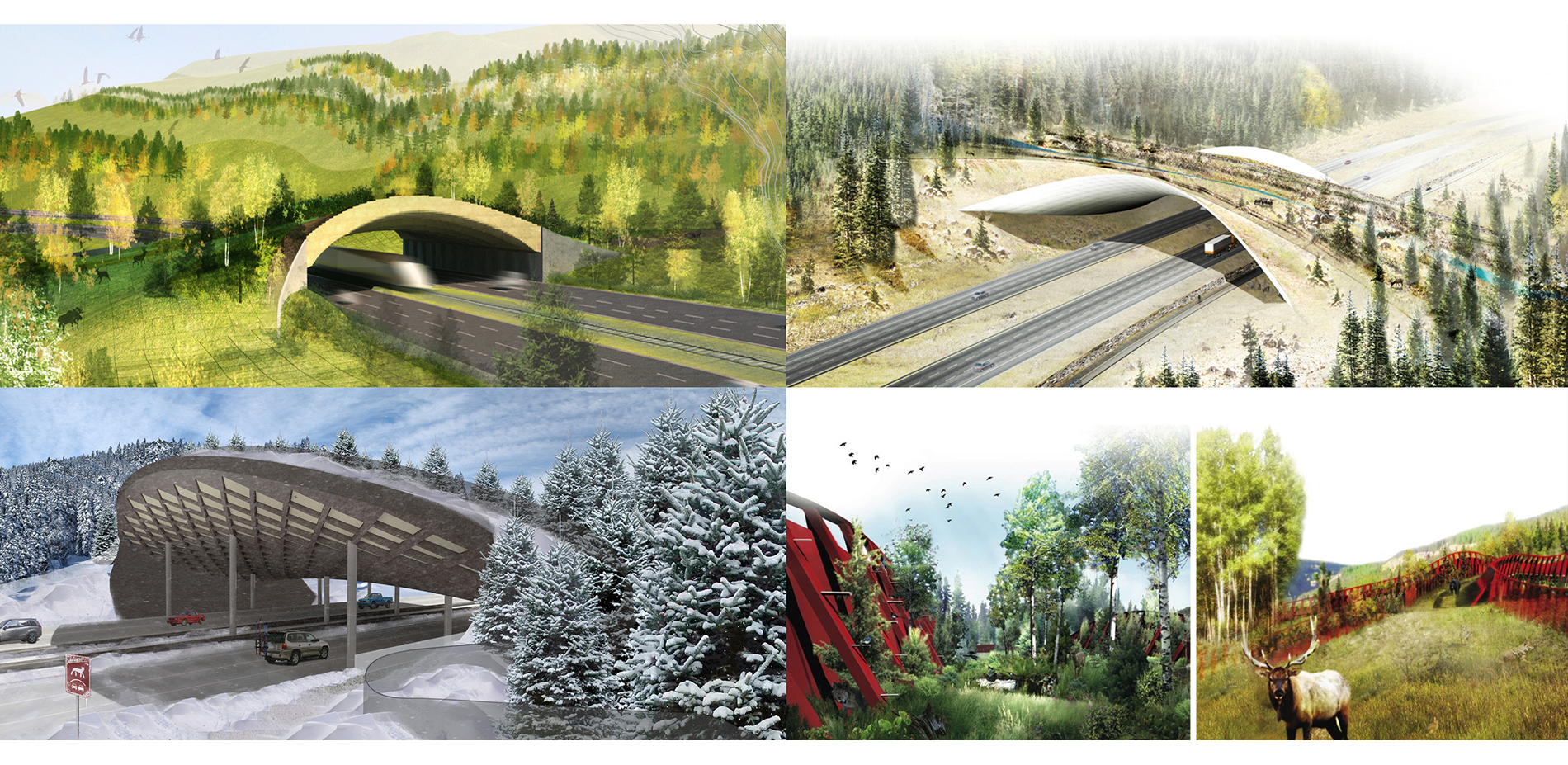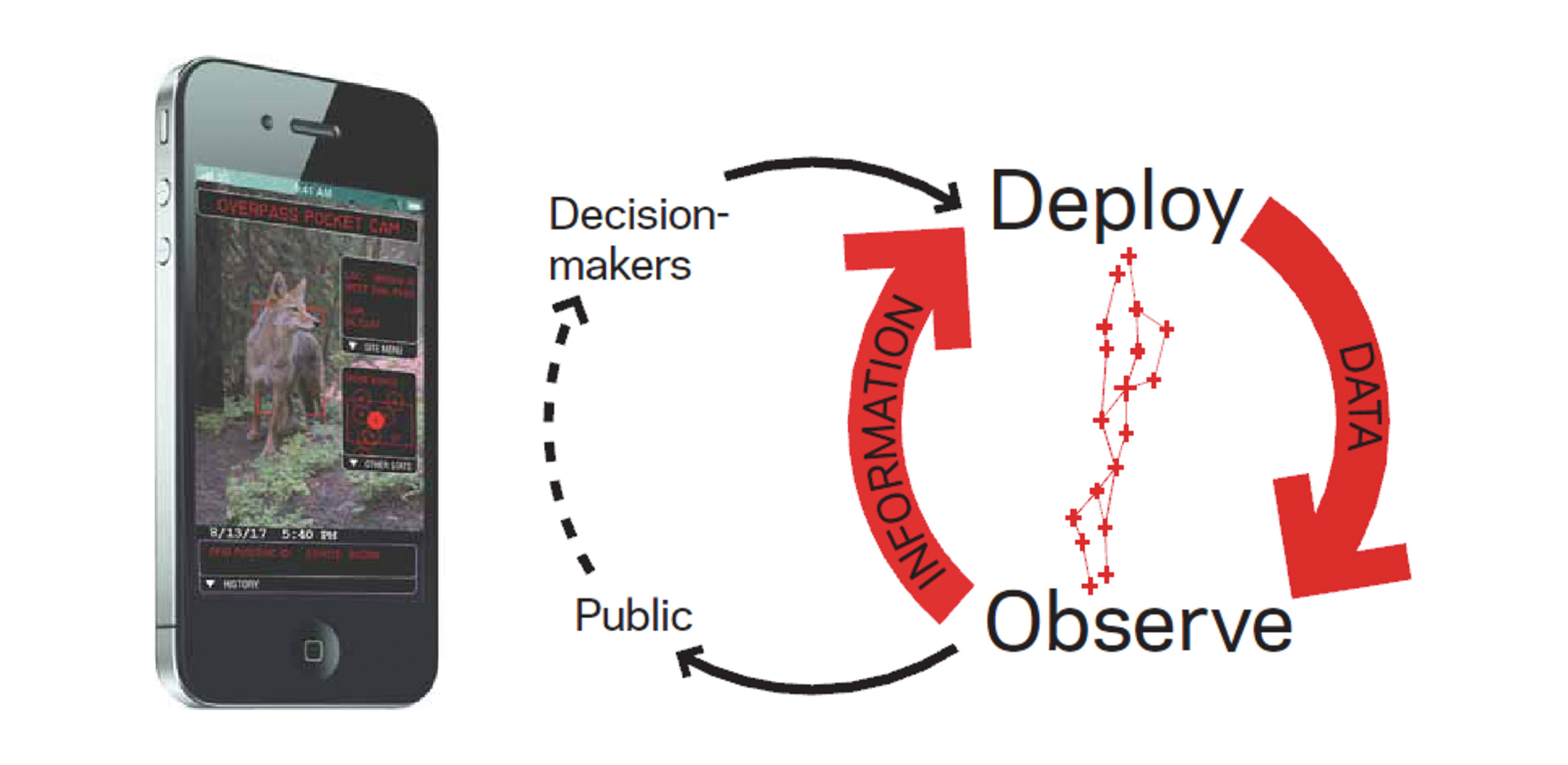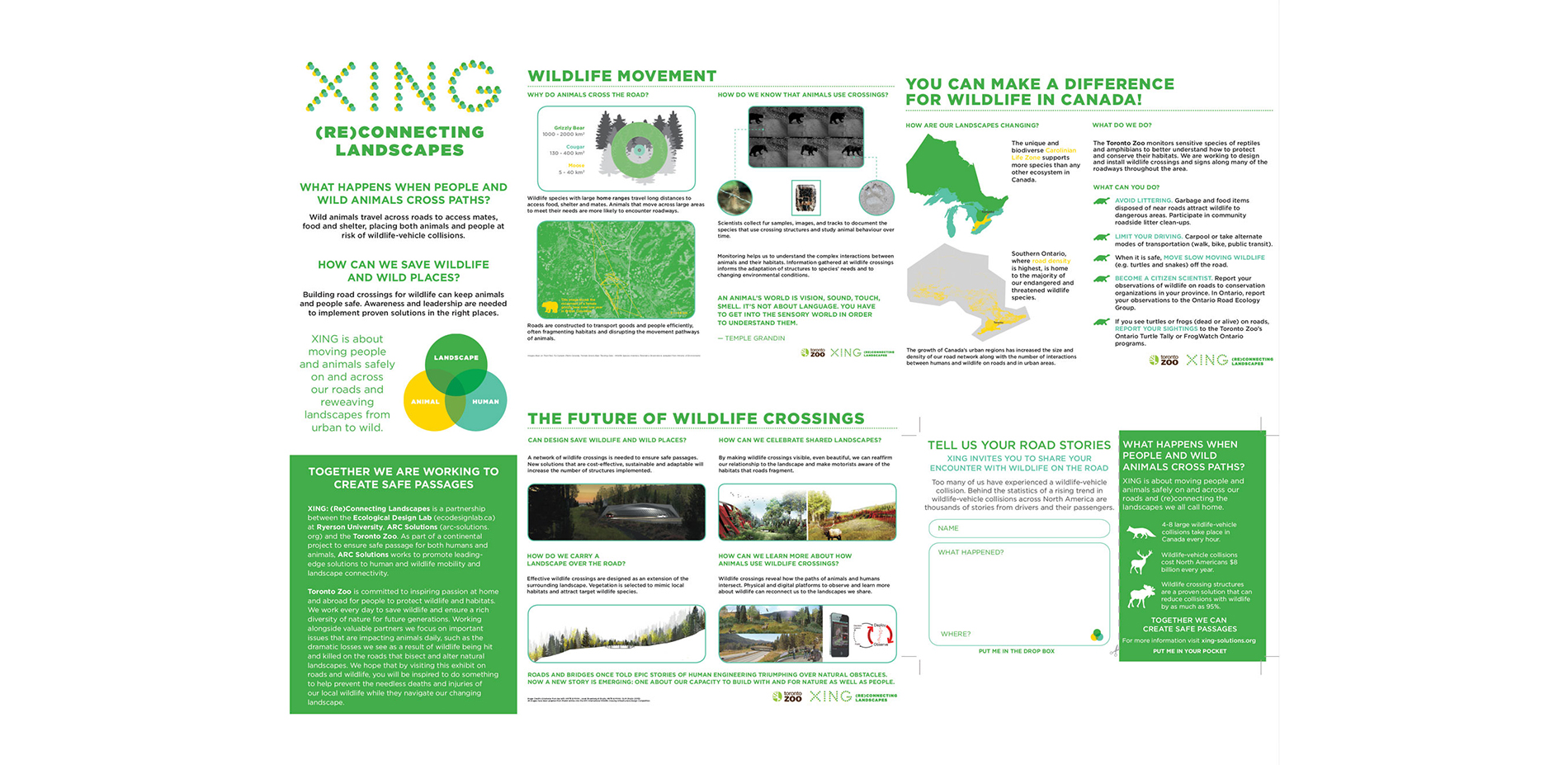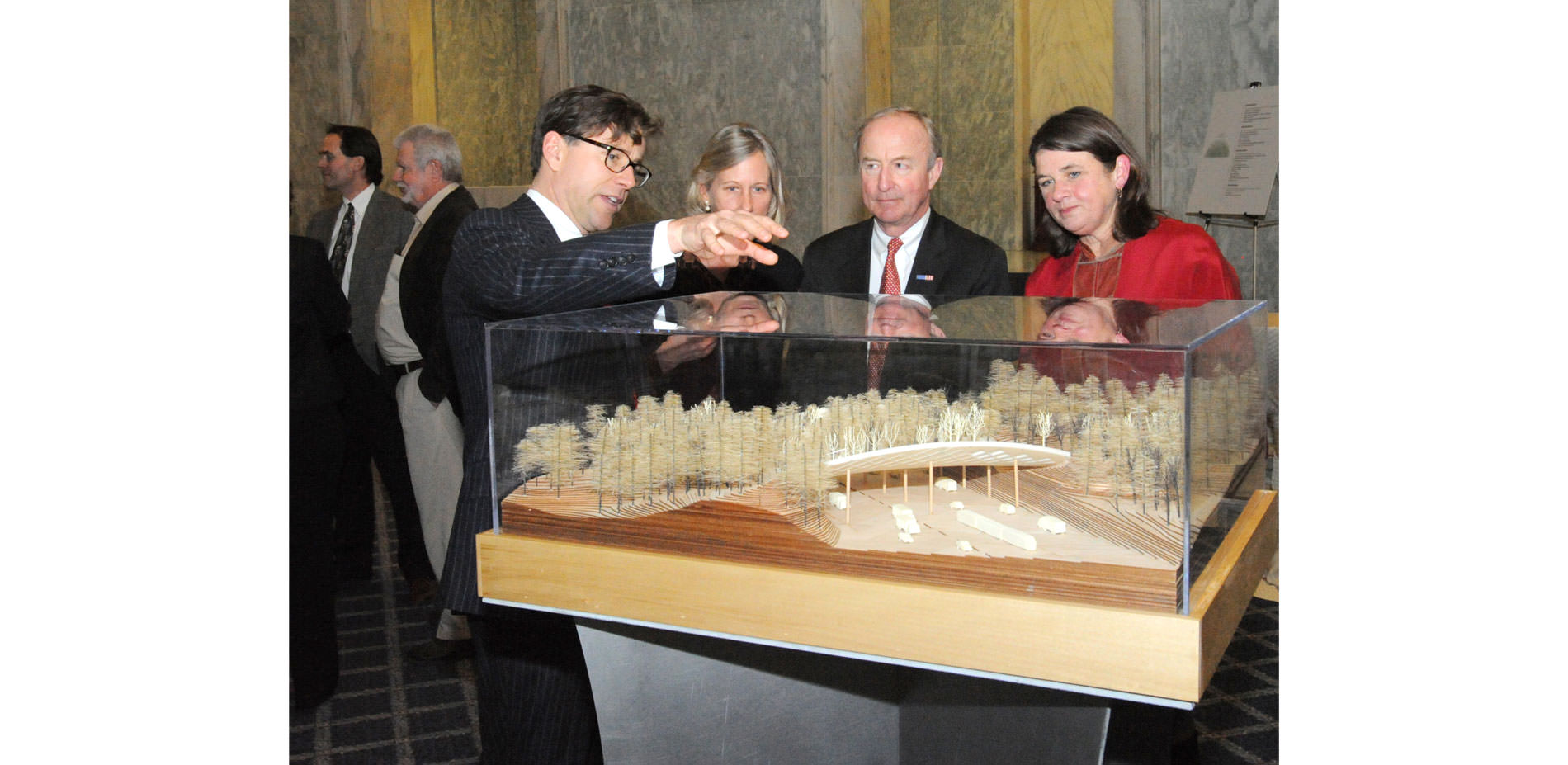Championing Connectivity: How an International Competition Captured Global Attention and Inspired Innovation in Wildlife Crossing Design
Honor
Communications
Bozeman, MT, USA | ARC Solutions
Landscape architects should promote and encourage this for a major funding initiative for new road construction.
- 2017 Awards Jury
PROJECT CREDITS
- Official Entrant: Robert Rock, ASLA
PROJECT STATEMENT
ARC, the Animal Road Crossing project, is an interdisciplinary partnership seeking to inspire new thinking, new methods, new materials and new solutions for the next-generation of wildlife crossing structures to (re)connect landscapes fragmented by roads. Despite their proven track record, wildlife crossing structure designs have generally been repurposed from traditional highway infrastructure built for vehicles. ARC originated the world’s first International Wildlife Crossing Design Competition to engage the best and most innovative landscape architects in envisioning the next generation of wildlife crossing structures: innovative, adaptive, cost-effective, and revelatory. The Competition spurred development of a new, timely and critical niche in design that has progressed from the relatively obscure to the mainstream, with wildlife crossing design projects increasingly featured in graduate landscape architecture projects and K-12 educational modules aimed at building innovative problem-solving skills. By harnessing the transformational power of design, ARC ensures that landscape architecture informs innovation, improves ecological effectiveness, and facilitates the widespread implementation of wildlife crossings, while raising public awareness of and support for this critical public infrastructure need.
PROJECT NARRATIVE
ARC, the Animal Road Crossing project, is an interdisciplinary partnership working to facilitate new thinking, new methods, new materials and new solutions for wildlife crossing structures to (re)connect landscapes.
One of the greatest human-made barriers, roads impede wildlife movement and fragment landscapes. In the United States alone, motorist collisions with wildlife result in the death of 1-2 million large animals and more than 26,000 injuries and hundreds of human fatalities annually. Inspired by the prototypical crossing structures in Banff National Park that bridge the TransCanada highway, ARC’s mission is to move people and animals safely across North America’s roads. Conceived to find an interdisciplinary solution to a complex problem, ARC sponsored the world’s first International Wildlife Crossing Infrastructure Design Competition (competition.arc-solutions.org), challenging interdisciplinary design teams that included the most innovative landscape architectural, engineering, transportation and ecological professionals from around the world to develop cost efficient, ecologically responsive, safe, educational and flexible wildlife crossing solutions.
The ARC competition ran in 2010 and attracted 39 interdisciplinary teams of more than 100 of the world’s best scientific and design professionals from nine countries. From these, five international teams were short-listed. The competition culminated in January 2011, when a jury of internationally-recognized experts in design, engineering and ecology selected the winning design by HNTB and Michael Van Valkenburgh & Associates (MVVA). Collectively, the five finalist designs have garnered a wide spectrum of media coverage for their innovation and promise.
Today, ARC has evolved into its post-competition phase, known as ARC Solutions (arc-solutions.org). An interdisciplinary, not-for-profit partnership, ARC Solutions works broadly to innovate, educate and promote wildlife crossing infrastructure. Comprised of three initiatives (Communications, Technology Transfer and Implementation), ARC is working to raise awareness about innovative crossing solutions with the broader goal of promoting wildlife crossings where needed to (re)connect fragmented landscapes.
Although the competition focused on a particular crossing site, ARC is about much more than a single bridge for wildlife: it tells a compelling story of the transformational power of ecological design to spur development of a new, timely and critical niche that has progressed from the relatively obscure to increasingly mainstream across professional, institutional, academic, and citizen audiences. In so doing, ARC has informed innovation, improved ecological effectiveness, and advanced the implementation of wildlife crossings, while raising public awareness of and support for this critical public infrastructure need.
Significant accomplishments since ARC’s inception seven years ago include activities to elevate awareness and overcome organizational and cultural barriers to implementing crossings using traditional and nontraditional communications techniques in creative, accessible ways:
- Requiring all teams in the competition to include an interactive and educational component in their design, such as: interpretive pullouts for drivers, observation points and interactive transmission of real-time wildlife crossing data via smart phones
- Using wildlife overpasses themselves, as visible solutions to the barriers effect of roads, to function as monumental communicators for the need to preserve connectivity
- Exhibiting the ARC competition finalists’ 3-D models and panels at the US Capitol Building, at more than five international venues, and at a variety of conferences and art galleries, including Yellowstone to Yukon: The Journey of Wildlife and Art exhibit at The Whyte Museum in Banff
- Announcing the competition winner during an awards ceremony of more than 500 people at the 2011 National Academies’ Transportation Research Board in Washington, DC
- Using our website (www.arc-solutions.org) – designed to be accessible to the interested 7th grader – to provide continuing education on this emerging science and educate decision-makers about innovative, affordable, attainable solutions to this complex environmental problem
- Completing a documentary video tinyurl.com/ARC-CompVideo that tells the story of the ARC competition and a time-lapse film (forthcoming) of a crossing being constructed over I-80 near the Pequop Mountains in Nevada to build awareness of and support for wildlife crossings
- Providing material for inclusion in a video produced by NBC Learn, the educational arm of NBC News; the video https://arc-solutions.org/news-and-media/videos/3182-2/, which examines how technology and engineering can help preserve animal populations and biodiversity through crossing structures, is part of a series of NBC Learn science videos produced in conjunction with Pearson Publishing, and is part of Pearson’s online text books for students across the country
- Speaking at more than 50 public talks and keynote lectures at various universities, museums, and via YouTube and TEDx, including the International Conference on Ecology and Transportation, Infra Eco Network Europe Conference, International Conference for Conservation Biology, Northeastern Transportation and Wildlife Conference, World Conference on Ecological Restoration, a Vail Symposium on Wildways for Wildlife, and an online Transit in Parks Technical Assistance Center nationwide webinar for federal land managers
- Publishing more than 70 papers and news articles, ranging from the New York Times, Wall Street Journal, and Fast Company Magazine to leading scientific journal articles featuring the ARC partners’ ground-breaking research and innovative design work related to road ecology, safe passage, and landscape connectivity (see, e.g., Minding Nature, published by the Center for Humans and Nature, (tinyurl.com/ARC-MindingNature); Landscape Architecture Magazine, (tinyurl.com/ARC-SaferPassage)
- Sponsoring a Cultures and Crossings Forum attended by representatives of DOTs from eight US states (AZ, CO, ID, ME, MA, MT, NE, WY), two provincial agencies (Alberta Transportation, Parks Canada), and three US federal agencies (FHWA, FWS, USFS) to explore attitudes affecting consideration of wildlife crossings as a way to save lives while improving connectivity
- Sponsoring a workshop to craft a manuscript on Highway Crossing Structures for Wildlife: Benefits of a National Commitment to Increase Driver and Animal Safety(forthcoming), co-authored by representatives from seven US state DOTs (AZ, ID, ME, MA, MT, NE, WY) and three US federal agencies (FHWA, USFS, USFWS), as part of an ongoing collaboration to educate decision-makers
- Producing and disseminating, Wildlife Crossing Design Recommendations: Innovations in Overpass Design, a guide illustrating the innovative design techniques developed during the competition, with the goal of working with US state DOT officials to build one or more ARC-inspired wildlife crossings
- Interviewing over 20 state DOT leaders and publishing Implementing Wildlife Crossing Infrastructure: Understanding DOT Culture, an ARC-sponsored survey of culture as it pertains to implementation of wildlife crossings by 50 US state DOTs; more than 500 individuals responded to the electronic questionnaire
- Connecting trans-boundary researchers to disseminate technical expertise and provide funding to support Colorado Parks and Wildlife’s monitoring of wildlife crossings built last year along Highway 9
- Sponsoring a workshop on Innovative Strategies to Reduce the Costs of Wildlife Overpasses, attended by US and Canadian experts in engineering, wildlife biology and landscape architecture, with the goal of identifying ways to decrease the cost of wildlife overpasses without compromising their effectiveness
- Producing and distributing 500+ copies of a series of ARC Special Publications designed to summarize technical information related to wildlife crossings to make it more accessible to non-technical audiences and build support for crossing structures as win-win-win solutions that save human lives, reduce wildlife mortality and conserve taxpayer dollars.
- Producing XING:(Re)Connecting Landscapes (xing-solutions.org), an educational, interactive public exhibit that brings forward the emerging dialogue on landscape connectivity by engaging with the public on the ways humans and wildlife collide, converge, and ultimately reconnect, exhibited at the Evergreen Brick Works (2013), Royal Ontario Museum (condensed format – March 2014) and on permanent installation at the Toronto Zoo (2016) At its core, ARC is about moving people and animals safely by building a system of built and metaphorical bridges linking wildlife to habitats, art to science, engineering to ecology—and, in the process, re-weaving the landscapes we call home. In so doing, ARC provides a remarkable example of precisely the sort of influential and innovative storytelling to diverse audiences that is a hallmark of the ASLA Communications Award.
